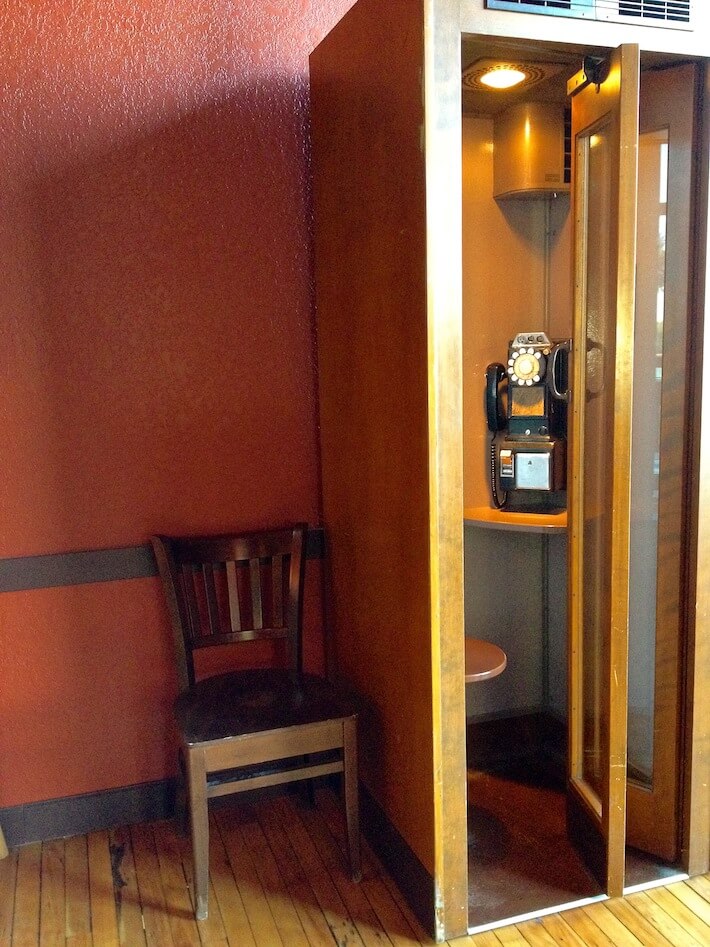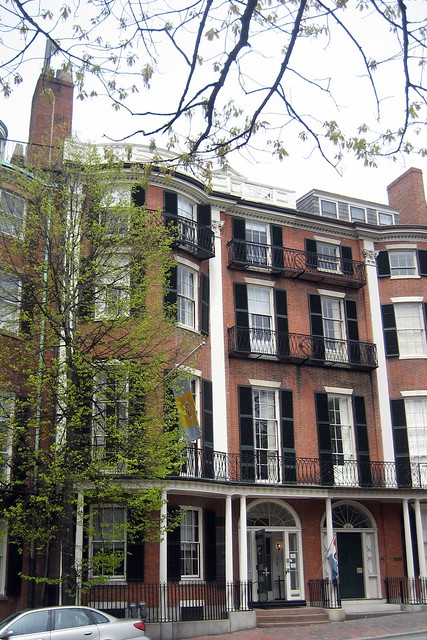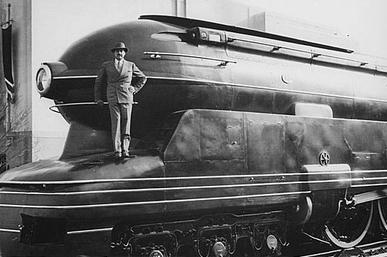 Murder at the New York World's Fair by Phoebe Atwood Taylor
Murder at the New York World's Fair by Phoebe Atwood TaylorWhen the sardonic author and founder of Random House Publishers, Bennett Cerf, was asked to contribute a book for the 5,000-year time capsule to be buried at the 1939 New York World's Fair, he commissioned mystery author Phoebe Atwood Taylor to write a novel set at the Fair. Taylor, author of two series of semi-comic mysteries––the Asey Mayo books set on Cape Cod and the Leonidas Witherall series about a retired academic and secret pulp fiction author––produced a one-off farce under the pen name Freeman Dana that kept me chuckling for hours.
One sunny April morning, Daisy Tower, respectable widow of a governor, borrowed some money and a new Spring outfit from the cook and escaped from her nephew's suburban house in a laundry van. While it had been very kind of Egleston and his wife Elfrida to take her in after she broke her hip, Daisy was long healed and wanted to return to her own home and staff in Beacon Hill. Elfrida wouldn't hear of it, and had kept her in bed and on an invalid diet for months. Daisy spent a lovely day in the city shopping and eating wonderful food, and felt so invigorated and free that she decided to call her butler to open up her city house. She was sitting in a phone booth at the train station, fumbling for change, when a young man raced into the booth and slammed the door closed, crushing her into her seat.
"Sorry, he gasped. Couldn't see you. Thought it was empty." Ace reporter Sam Minot was having a terrible day. First, he was fired from his job for no reason he could discern, then, as he explained to Daisy, a man had been following him ever since he left the newspaper office. "Now I've dropped in, ma'am, could I stay till I find out if Comrade Glue's been shaken?"
"I know that fired look," Daisy said. "I have a son who was constantly being fired by the newspapers and chased by policemen. Until Boylston finally grew up, and got to be a war correspondent in places like Manchuria and-"
"You're Boy Tower's mother! That accounts for it. You twinkle and all." Daisy good-naturedly agreed to go out and look around for Comrade Glue, who was described as wearing a gray suit and a black felt hat. When she saw the thuggish-looking man at the newsstand, she understood Sam's concern. She casually purchased a paper and returned to the communal booth to report that not only was Comrade Glue still there, but that she herself was being hunted by the police. The news headline read "PROMINENT ELDERLY WOMAN MISSING FROM SOUTH SHORE HOME." Police were dragging local horse ponds, fearing she had drowned herself in her nightgown.
Daisy decided to take Sam home with her, and placed a call to have her butler open up the house. To her chagrin, she learned that Egleston had dismissed her staff, sold her cars, stored her furniture, and rented her house out––all without her knowledge or permission. No wonder they were so anxious to keep her bedridden and helpless! "Sam, do you want a job?"
"I'll beat Egleston up for nothing!"
"Sam, I'll pay you what you've been getting to escort me to the World's Fair." (Daisy loved fairs, and was far too angry and shocked to deal with Egleston and Elfrida just yet.) "Thank goodness I've got my checkbook with me, and even though someone's been going through it, I'm sure my bank balance hasn't been touched."
Daisy went to a nearby store to buy a disguise to smuggle Sam past Comrade Glue, still hovering near the newsstand. On her return, she was offered a gasoline discount card by a shabby young woman handing them out in the train station. "Daisy! Daisy Tower, darling, it's you and you're well and whole!" Elfrida had told Daisy that Cherry Chipman, her beloved companion, had quit because she didn't want to nurse an invalid––then had fired Cherry, telling her that Daisy blamed Cherry for the car accident that had disabled her. Daisy rehired Cherry on the spot, and explained that she needed to get the disguise to Sam, still lurking furtively in the phone booth.
 Cherry, however, felt duty-bound to distribute her remaining gas cards, including the three remaining special envelopes that she had been instructed to deliver to certain types of people. She had already given envelopes to a middle-aged man and woman. She still had to give envelopes to a young man, an elderly lady, and a nice-looking young girl. Daisy pointed out that those requirements could be satisfied instantly, and dragged Cherry over to meet Sam. To their astonishment, the envelopes contained VIP passes to the World's Fair and travel tickets for the Golden Dart, the luxurious private train owned by reclusive millionaire Conrad Cassell, who was lending a fortune in art to the Fair. The Golden Dart was waiting on a nearby siding, which allowed the trio at least to get out of town for awhile in posh comfort, without constantly peering over their shoulders for police or Comrade Glue!
Cherry, however, felt duty-bound to distribute her remaining gas cards, including the three remaining special envelopes that she had been instructed to deliver to certain types of people. She had already given envelopes to a middle-aged man and woman. She still had to give envelopes to a young man, an elderly lady, and a nice-looking young girl. Daisy pointed out that those requirements could be satisfied instantly, and dragged Cherry over to meet Sam. To their astonishment, the envelopes contained VIP passes to the World's Fair and travel tickets for the Golden Dart, the luxurious private train owned by reclusive millionaire Conrad Cassell, who was lending a fortune in art to the Fair. The Golden Dart was waiting on a nearby siding, which allowed the trio at least to get out of town for awhile in posh comfort, without constantly peering over their shoulders for police or Comrade Glue! I don't need to tell mystery readers what invariably happens on luxury trains, but if you want to learn how Daisy and her crew solved the murder and thefts, secured an oil contract critical to the US, and stopped the madman determined to destroy the Fair, you will just have to read the book.
The Fair that Daisy and her friends saved was the brainchild of a group of retired New York City policemen who wanted to give the local economy, struggling out of the Great Depression, a jump start. While its theme was "Building the World of Tomorrow," the Grand Opening was patriotically set for April 30, 1939, the 150th anniversary of George Washington's first inauguration. Their gamble paid off; over 44 million people visited the exhibits to gape at such wonders as the first fluorescent light and automatic dishwasher, and a diesel engine that could travel continuously at the breathtaking speed of 60 miles an hour. They could even order a new car from GM in the morning, watch it being assembled, and take delivery that evening. At the IBM exhibit, visitors goggled at the first electric typewriter and the amazing electric punch-card calculator that would soon form an important part of the war effort.
Murder at the New York World's Fair is a tour de force of a farce, a breathless nonstop romp that reminds me of nothing so much as a Buster Keaton movie. It was included among the over 10 million words that were put on microfiche and placed in the 1939 Westinghouse Time Capsule, along with architectural drawings, personal letters from Albert Einstein and Thomas Mann, and many hundreds of books, including works by Goethe, Mann, Einstein––and Margaret Mitchell's blockbuster novel, Gone with the Wind. After a mere 75 years, the world it describes is already incredibly distant for contemporary readers, so I can't even begin to imagine what our remote descendants will make of this wonderful period comedic mystery!
Note: If you are curious, a complete list of the contents of the time capsule is here.




No comments:
Post a Comment